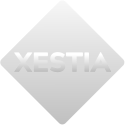1 <!DOCTYPE HTML PUBLIC "-//W3C//DTD HTML 4.0 Transitional//EN" "http://www.w3.org/TR/REC-html40/loose.dtd">
\r
4 <link href="style.css" REL="stylesheet" TYPE="text/css" MEDIA="screen">
\r
5 <meta http-equiv="Content-Type" content="text/html;charset=UTF-8">
\r
6 <title>Kiriwrite Documentation - User Documentation - Chapter 4: Usage Tips</title>
\r
9 <div class="menubarback">
\r
10 <div class="menubar">
\r
11 <span class="apptitle">Kiriwrite</span>
\r
12 <a href="index.html">Index</a> | <a href="user.html">User
\r
13 Documentation</a> | <a href="tutorial.html">Tutorial Documentation</a> |
\r
14 <a href="developer.html">Developer Documentation</a>
\r
17 <div class="pageinformation">
\r
18 <span class="pagetitle">Chapter 4: Usage Tips</span><br><br>
\r
19 This chapter mainly contains usage tips in securing your Kiriwrite installation and small features which may be useful for some users.<br><br>
\r
21 <div class="specific apache132x">
\r
22 In this chapter, directory specific settings used in Apache is .htaccess. Typically, if the web server software is configured to check a file other than .htaccess then a different filename would be used (and would be blocked from being accessed from the web server).
\r
